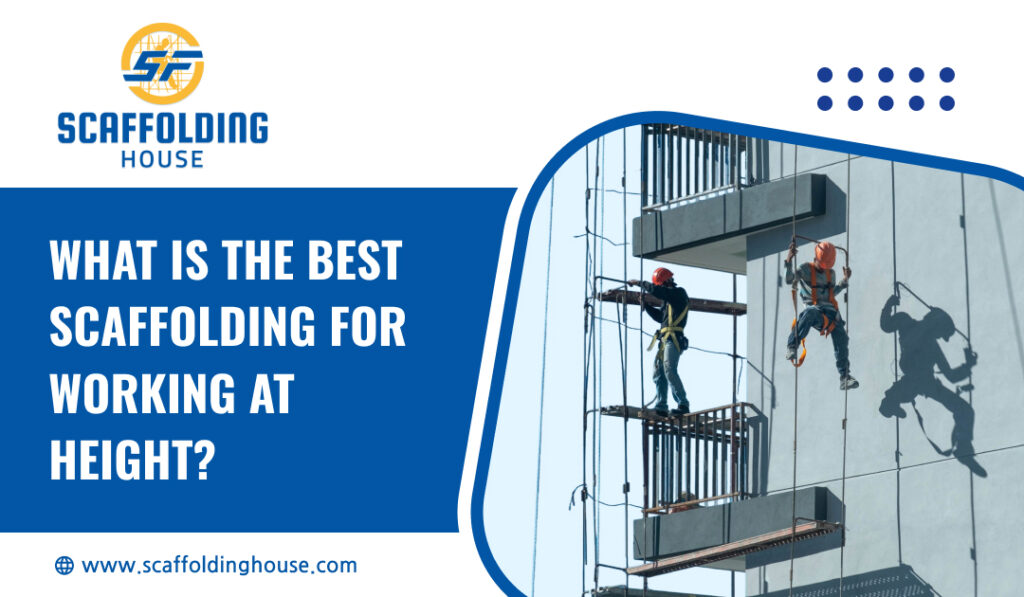Selecting the appropriate scaffolding height and setup goes beyond simply following safety regulations, it plays a crucial role in ensuring a secure and efficient work environment. Whether you are making minor repairs on a residential property or managing a large-scale industrial job, your scaffolding choice directly affects both safety and productivity. In this guide, we’ll cover the key considerations to help you choose the right scaffolding solution for any project.
The Importance of Proper Scaffold Height and Configuration
Getting the height and configuration right isn’t just a technical detail, it’s fundamental to job site safety and efficiency. The correct setup ensures your team can safely access all necessary areas while working comfortably. With the right scaffolding, you reduce the risk of accidents and enhance workflow.
Which is the Best Scaffolding for Accessing Elevated Areas?
Different projects need different types of scaffolding. Here are the most commonly used scaffolding systems to access elevated areas:
- Frame Scaffolding: Widely used in general construction and renovation projects, this type offers a stable and straightforward structure ideal for building work.
- Mobile Scaffolding: Also referred to as rolling towers, these scaffolds are built for mobility, making them suitable for jobs that require frequent repositioning along walls or facades.
- Suspended Scaffolding: Hung from above using ropes or cables, this system is ideal for high-rise construction where ground-supported scaffolding isn’t feasible.
- Tower Scaffolding: Mobile tower scaffolds can be assembled to various heights and are commonly used for both interior and exterior tasks on residential and commercial properties.
- Aluminium Scaffolding: They are corrosion-resistant and a popular choice for projects in challenging environments.
Choosing the Best Scaffold Setup
Selecting the right scaffold configuration can significantly boost both efficiency and productivity. Below is an overview of the most commonly used setups and what sets them apart:
- Mobile vs. Fixed Scaffolding: For projects that require frequent movement across a site, mobile scaffolding is an excellent solution. It’s ideal for jobs that cover a wide area. On the other hand, fixed scaffolding offers greater stability and is better suited for stationary tasks.
- Single vs. Double-Width Scaffolding: Tight on space? Single-width scaffolding fits narrow areas and is easy to work on. For larger crews or when a wider workspace is needed, double-width scaffolding is a better option. Aluminium Scaffolding is especially adaptable, allowing for easy switching between configurations and making it a go-to for varied site needs.
- Adjustable Platforms and Height Levels: Projects often demand access at multiple heights. Adjustable platforms make it easy to modify working levels on the fly, reducing downtime and allowing workers to stay focused on the job rather than constantly rebuilding the structure.
Safety Measures to Consider for Scaffolding
You need to follow some guidelines to keep your team safe when working with scaffolds:
- Ensure to set up properly
When setting up a scaffold, make sure that all scaffolding parts are assembled correctly and anchored securely to avoid slipping or wobbling. Make sure to check stability before you begin work.
- Safety precautions and regular inspection
Make sure to inspect scaffolding daily to ensure that every part of the scaffold is in top condition. Ensure that all workers have safety gear, especially if they are working at heights.
Benefits of Using the Right Type of Scaffold for Working at Height
- With the right scaffolds, workers can perform their tasks confidently, allowing them to maintain balance while working.
- Scaffolds offer unrestricted and stable access to all areas of a structure.
- Scaffolding systems are easy to assemble and dismantle, which makes them an ideal option for construction sites.
- Scaffolding provides a secure platform for workers to complete their work, making it suitable for working at height.
- They are versatile and can be customized to meet specific job requirements. Whether it’s adding extra support or adjusting height, scaffolds can meet the needs of several projects.
Conclusion
It’s essential to choose the right type of scaffolding to access elevated areas. Scaffolding House has a wide range of scaffolding products to help you work at heights. Despite this, we also have wing nut bolt, water stoppers, base jack scaffolding, and many more to help you work with different projects effortlessly.

